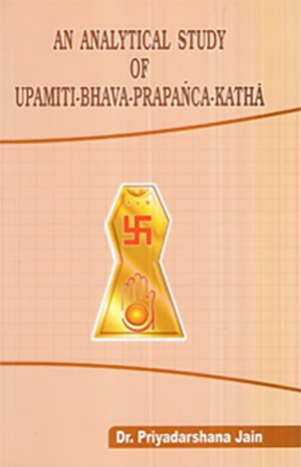Jainavenue is a medium to serve the spiritual path of Jainism

The 1st Step to Moksha according to Jainism
January, 2024 by Sunil GandhiJain Agamas and scriptures have shown the Moksha Path with distinct clarity. These scriptures have laid down the prerequisites for attaining Moksha.

Tracing the Historic Foundations of ‘Sarak’ Identity
January, 2024 by Dr. Anupam JashThe religious and ethnic identity of the Saraks: There is a community, that may be found in several regions of India, including West Bengal and the neighbouring regions of Jharkhand. This community is known as ‘Sarak’ community which is a religious and ethnic minority of this area. Their effect cannot be ignored, despite the fact that they do not constitute a very large population.

Jainism Beliefs: The Three Jewels
January, 2024 by Ms. McKenzie PerkinsAs one of the world’s oldest religions, Jainism was established in India around 500 B.C. by Mahavira, though elements of the religion developed far before that. The focal Jainism belief is to reach kevala - a state of elevated or blissful existence, comparable to Buddhist nirvana or Hindi moksha - by way of practicing nonviolence.

Reset your Gut for Optimal Health
January, 2024 by Dr. Pritesh MuthaA healthy or unhealthy gut hinges on your diet, according to Pritesh Mutha, MD, gastroenterologist with UT Physicians and associate professor with McGovern Medical School at UTHealth Houston. “Literally speaking, you are what you eat. The GI tract, or your gut, is the seat of your immune system. Whatever is good for your gut is good for your entire body,” Mutha said.

The Importance of Silence (Maun)
January, 2024 by Kishor B. ShahThe festival of Maun Ekadashi (also known as Maun Agyaras) is an auspicious Jain festival which falls on the 11th day of the month Magshar (Magshar Sud 11). Maun Ekadashi is the Sanskrit term and in Gujarati it is known as Maun Agyāras or 'Silence Eleventh'.

Canadian Jain community protests against encroachment and safety threats at pilgrimage site in Gujarat
January, 2024 byThe Jain community in Canada is raising concerns over encroachment and security threats faced by devotees at a sacred pilgrimage site in India. Members of the community have formally submitted a letter addressing these issues to Siddhartha Nath, India’s consul general in Toronto. They received assurance that their concerns would be communicated to the Home Ministry in New Delhi.

Ratnatraya: Animals Through the Lens of Samyak Darshan, Gyan, and Charitrya
December, 2023 by Dr. Pratik BhansaliJai Jinendra, everyone. Our discussion around Jain principles often revolves around fundamental principles like Ahimsa and Ratnatraya, and rightly so. But how do the Ratnatraya guide us in the modern world with all its practicalities? While we often talk about animals in the context of Jainism, philosophically examining our views and actions regarding animals as an extension of these basic principles would be an interesting conversation.

Beyond the Art: The Future of Jainism
December, 2023 by Mansi ShahI was met with mixed emotion this past summer when I came across a sculpture of Bahubali, Jain saint and son of Bhagvan Rishabhanatha, the first Tirthankara, at the Metropolitan Museum of Art in New York City. I was proud to see Jain art displayed so simply yet majestically among other Asian artwork.

Debunking the Five Greatest Myths of a Plant-based Diet
December, 2023 by Dr.Pritesh Mutha, MD, DipABLM, MPHDespite the fact that most people have heard of a plant-based diet, many of them have never tried this diet and lifestyle because of several widespread misconceptions.

An Analytical Study of Upamiti-Bhava-Prapanca-Katha
December, 2023 by Priyadarshana JainPreface: I have made an analytical study of the 10th century text of UPAMITI-BHAVA-PRAPANCA-KATHA, in this thesis. My aim was to study and evaluate the uparalleled allegorical text of Upamiti-Bhava-Prapanca-Katha written by Siddharsi. The subject matter of the text inspired me to take up this research study. It is marvellous indeed that the author has interwoven an entire tale with philosophy and expounded the concept of manifold existence, which cannot be confined to a particular philosophy or religion.

Palitana – The Land of Salvation
December, 2023 by https://www.jainism.pilgrimagetour.in/palitana-gujarat/Palitana is an important city of pilgrimage holding the significance of salvation for the Jain community that is situated 50 km South-west of the Bhavnagar city in the state of Gujarat. Since ancient times, it is been said that the number of people who achieved liberation is equal to the number of stones (millions and millions in number) on the Shatrunjaya hills on whose foot is the Palitana city. Such is the divinity of these hills. Therefore, for the Jains, the temples on the Shatrunjaya hills are considered the most sacred tirth (place of pilgrimage). It is believed that once in a lifetime, every Jain should go to Palitana to obtain the liberating karma (deed) of ‘Bhavya’ status, which makes one capable of attaining salvation.

Ahimsa Day at the House of Commons
December, 2023 by Kishor B Shah“Peace is at the centre of spiritual life and Ahimsa is the means to this peace.” “Ahimsa is standing up against any forms of violence, of thought, speech and actions, be it against human beings, animal world, environment, the earth, planets, trees, and rivers and so on....”

